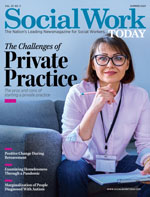|
Letters to the Editor To the Editor Doctors and epidemiologists have studied the ongoing oppression of marginalized populations by ERPO legislation. While it’s clear from the literature that ERPOs work, they remain oppressive. The implementation of the ERPO policy does not consider the language contained in the statutes and how it marginalizes populations, specifically prior felony arrests and “sealed” juvenile records, without considering the historical oppressive practices that occurred during the arrests of those individuals.4-6 Unfortunately, this oppression disproportionately targets African Americans, as they have historically been targeted for arrest at high rates compared with their white counterparts.6 African Americans are least likely to engage in and reach out to law enforcement to obtain ERPOs for their peers and participate in the ERPO process given the historical and ongoing oppression by the judicial system.7 Minimal research has been done on the applicability of social work frameworks and theories to recognize and address the oppressive side effect of ERPOs. This issue does not solely reside within public health, despite being declared a public health crisis; it is also a social justice issue. While there are policies that may work, we not only must not stop advocating for improvement in those already-implemented policies but also must inform those who may want to implement the same policies to avoid the cyclical nature of oppressive policies and how they are perpetuated against marginalized populations. Sincerely, References 2. Consortium for Risk-Based Firearm Policy. Extreme risk protection orders: new recommendations for policy and implementation. https://efsgv.org/wp-content/uploads/EFSGV-ConsortiumReport2020-ERPOs.pdf. Published October 2020. Accessed March 8, 2023. 3. Zeoli AM, Frattaroli S, Barnard L, et al. Extreme risk protection orders in response to threats of multiple victim/mass shooting in six U.S. states: a descriptive study. Prev Med. 2022;165(Pt A):107304. 4. The Coalition to Stop Gun Violence. A working guide towards more racially equitable extreme risk laws. https://www.csgv.org/wpcontect/uploards/2021/04/workingguide-towards-more-racially-equitable-extreme-risk-laws.pdf. Published April 2021. 5. Kopel DB. Red flag laws: proceed with caution. Law Psychol Rev. 2021;45:39-86. 6. Swanson JW. The color of risk protection orders: gun violence, gun laws, and racial justice. Inj Epidemiol. 2020;7(1):46. 7. Pear VA, Schleimer JP, Aubel AJ, et al. Extreme risk protection orders, race/ethnicity, and equity: evidence from California. Prev Med. 2022;165(Pt A):107181.
To the Editor According to the US Bureau of Labor Statistics, there are more than 700,000 social workers in the United States. The median salary of a social worker in the United States is $50,390 annually or $24.23 an hour. However, the average cost of gaining a master’s degree in social work, according to the US Department of Education, is roughly $75,000. This does not include the fees for supervision, licensing exam, continuing education, and licensure. In addition to this, the Association of Social Work Boards exam to become a licensed social worker has been shown to have clear racial disparities. People of color are less likely to pass the exam on the first try, further incurring fees and barriers to becoming a licensed social worker. Licensure could help social workers increase their earning potential. If we are going to claim that “social work breaks barriers,” there should be a focus on breaking barriers for social workers first. There should be more advocacy on behalf of social workers by doing an across-the-nation salary study, comparing the salaries of social workers with those of other comparable, masters-level professionals. Furthermore, there should be an overhaul and commitment to reducing the barriers to becoming a social worker so that more passionate individuals can join our profession and assist with breaking more barriers. Let us advocate for ourselves as we advocate for others. Sincerely, |


